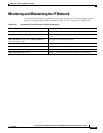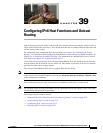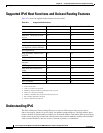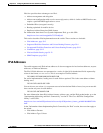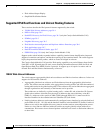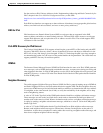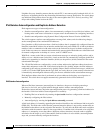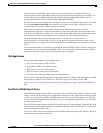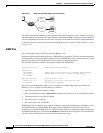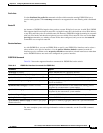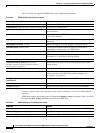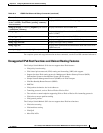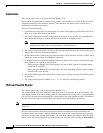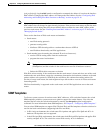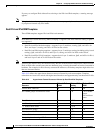
39-7
Cisco Catalyst Switch Module 3110 and 3012 for IBM BladeCenter Software Configuration Guide
OL-12189-01
Chapter 39 Configuring IPv6 Host Functions and Unicast Routing
Understanding IPv6
IPv6 nodes with a 48-bit MAC address generate an identifier for the autoconfigured address by
inserting 0xFF and 0xFE in the MAC address and reversing the universal/local bit. For example, if an
interface MAC address is 000b.462e.9047, the identifier would be 020b:46ff:fe2e:9047, and the
autogenerated IPv6 ink address would be FE80::20B:46FF:FE2E:9047.
Only IPv6 hosts can autoconfigure stateless addresses of site-local and global addresses that are started
by using ipv6 address autoconfig on an interface. An IPv6 host sends router solicitations to the
all-routers multicast group to obtain router advertisements.
IPv6 routers also periodically send router advertisements, but the delay between successive
advertisements is generally a longer duration than for what a host performing autoconfiguration will
wait. Router advertisements contain zero or more prefix information options that contain information
that the stateless address autoconfiguration uses to generate site-local and global addresses.
Prefix information options specify the prefixes that are on-link and are used for address
autoconfiguration. A router includes all of its on-link prefixes (except the link-local prefix) so that
multihome hosts have complete prefix information about on-link destinations for the links to which they
attach.
The autogenerated address is obtained by appending the interface IEEE EUI-64 to the prefix in the prefix
information option in the router advertisement. If the sum of the prefix length and interface identifier
length does not equal 128 bits, the prefix information option is ignored.
IPv6 Applications
The switch has IPv6 support for these applications:
• Ping, traceroute, Telnet, TFTP, and FTP
• Secure Shell (SSH) over an IPv6 transport
• HTTP server access over IPv6 transport
• DNS resolver for AAAA over IPv4 transport
• Cisco Discovery Protocol (CDP) support for IPv6 addresses
For more information about managing these applications with Cisco IOS, see the “Managing Cisco IOS
Applications over IPv6” section in the Cisco IOS IPv6 Configuration Library at this URL:
http://www.cisco.com/en/US/products/sw/iosswrel/ps1839/products_feature_guide09186a00807fcf4b.
html
Dual IPv4 and IPv6 Protocol Stacks
One technique for transitioning to IPv6 is by using dual IPv4 and IPv6 protocol stacks. Using dual stacks
enables gradual, one-by-one upgrades to applications running on nodes. Applications that are upgraded
to IPv6 use the IPv6 protocol stack, and applications that are not upgraded and support only IPv4 can
coexist with upgraded applications on the same node. New and upgraded applications can use both IPv4
and IPv6 protocol stacks.
The Cisco IOS software supports the dual IPv4 and IPv6 protocol stack technique. When both IPv4 and
IPv6 routing are enabled and an interface is configured with both an IPv4 and IPv6 address, the interface
forwards both IPv4 and IPv6 traffic.
Figure 39-1 shows a router forwarding both IPv4 and IPv6 traffic through the same interface, based on
the IP packet and destination addresses.



